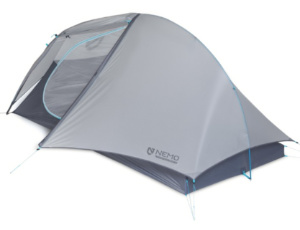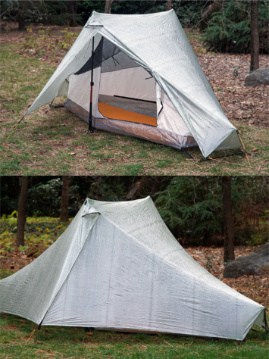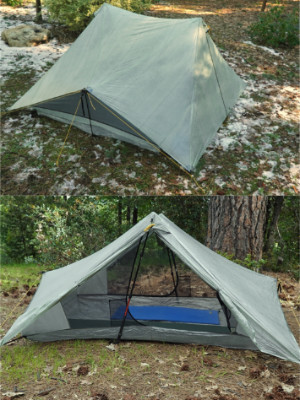
Ultralight backpacking tents are a great choice if you’re attempting to scale back the burden of your backpacking gear however you’re unwilling to surrender the consolation of a tent and sleep below a tarp with out insect safety. The lightest weight ultralight backpacking tents are sometimes made with Dyneema Composite Fabrics (DCF) and use trekking poles as an alternative of tent poles to save lots of weight. While many are single-wall tents and extra vulnerable to inside condensation, some are double-wall tents or a hybrid mixture of the 2. But don’t low cost tents made with extra standard materials which can be freestanding, extra wind worthy, longer for tall folks, or extra spacious, particularly for {couples}. There has by no means been a greater time than now to purchase a light-weight tent.
Here are the ten finest ultralight backpacking tents that we advocate.
See our recommendation on the backside of the web page for recommendation about how to decide on between these totally different choices.
1. Zpacks Duplex Tent (2P)
Check out the most recent value at:
Zpacks
2. Gossamer Gear “The One” (1P)
Check out the most recent value at:
Gossamer Gear
3. Durston X-Mid 1 (1P)
Check out the most recent value at:
Kasovo Outdoors
4. NEMO Hornet Elite OSMO 2 (2P)

Check out the most recent value at:
REI | Backcountry | NEMO
5. Tarptent Double Rainbow (2P)
Check out the most recent value at:
Tarptent
6. Zpacks Plex Solo (1P)
Check out the most recent value at:
Zpacks
7. Six Moon Designs Lunar Solo (1P)
Check out the most recent value at:
Six Moon Designs
8. Tarptent Notch Li (1P)
Check out the most recent value at:
Tarptent
9. Hyperlite Mountain Gear Unbound 2 (2P)
Check out the most recent value at:
Hyperlite Mountain Gear
10. Tarptent Dipole (2P)
Check out the most recent value at:
Tarptent
Ultralight Backpacking Tent Selection Guide
The backpacking tent producers who make trekking poles tents use a variety of various supplies and designs. When searching for a tent, it’s vital to grasp the tradeoffs of the fashions you’re contemplating and the way they’ll complement your adventures.
Ultralight Tent Materials and Price Points
Trekking poles tents can be found in a wide range of totally different supplies and at totally different value factors. Dyneema DCF is the lightest weight materials and the most costly, partly as a result of it requires specialised manufacturing processes. Tents made with Silpoly, Silnylon, and PU coated silnylon are a lot inexpensive than Dyneema as a result of they are often sewn utilizing standard strategies. They’re additionally roughly comparable in value. It’d be troublesome to say which is the very best material to make tents with as a result of material high quality varies extensively relying on the producer and specification to which it’s made. That mentioned, ultralight tentmakers are starting to change away from silnylon to silpoly as a result of it has much less stretch than silnylon and absorbs much less water.
- Tents made with Dyneema DCF are very costly, but in addition very light-weight, waterproof, and powerful. They are extra inclined to break from daylight over the long run, however that’s seldom a difficulty for most individuals. Dyneema tents should be folded when packed not stuffed, however can nonetheless be surprisingly cumbersome regardless of their low weight.
- Tents made with siliconized polyester (silpoly) are a horny different to Dyneema DCF as a result of they don’t stretch a lot in a single day or after they get moist from rain. They’re additionally far inexpensive and a few are seam-taped, so you need to use them out of the field with none seam sealing.
- Tents made with PU-coated silnylon are usually extra waterproof than common silnylon, however it is advisable to examine their waterproofing specs to make sure. The chief good thing about the PU coating over common silnylon is improved UV resistance and the truth that the fabric might be manufacturing unit seam-taped.
- Tents made with silnylon are nonetheless widespread as a result of it’s a straightforward materials for producers to work with. While silnylon does stretch at night time and when it will get moist, it’s not as massive a deal as folks make it out to be. Silnylon tents should be manually seam-sealed earlier than they can be utilized in wet climate. While you are able to do this your self, my recommendation can be to pay the producer to do it for you so that you get a tent that’s prepared for use when it arrives.
Single-wall vs Double-wall Tents
Ultralight backpacking tents can be found in single-wall and double-wall fashions, with separate inside tents. While each are vulnerable to inside condensation, the benefit of a double-wall tent is the moisture collects on the underside of the rainfly and never on a wall that has contact together with your sleeping bag, quilt, or different gear. The inside tent and rainfly on many double-wall tents can be used independently from each other, for instance as a standalone tarp or as a bug bivy, which may prolong their utility. The benefit of a single-wall tent over a double-wall one is normally lowered weight.
If tent condensation ever turns into a difficulty for you, we advocate carrying a small absorbent face towel to wipe it away. Tent condensation is a small value to pay for lowered gear weight and it received’t kill you except you’re a witch (wizard-0f-Oz reference).
Headroom
Many ultralight backpacking tents pole tents have a pyramid form which may restrict the quantity of headroom and foot room out there below the sloping ceiling. Lying in your again and watching a ceiling that’s three inches out of your face might be unpleasantly claustrophobic. Make certain you look at the size of the tents you’re contemplating, along with their peak heights.
Trekking pole tents that require two poles to arrange normally have two peaks, which may improve the quantity of livable area overhead, in comparison with a one-pole tent. Some tent producers additionally scale back the slope of the ceiling to create extra headroom. The finest instance of that is Tarptent’s use of carbon fiber finish struts to extend the quantity of room below the ceilings on the head and foot ends of their tents. The draw back of those finish struts is that it will probably make tents more durable to pack horizontally in a backpack.
Vestibules
Vestibules are good for gear storage, particularly moist gear storage, and for cooking below cowl in windy or wet climate. Most one-pole tents have a single vestibule, whereas two-pole tents usually have two. When shopping for a two-person tent, you’ll positively need two doorways and two vestibules so you may every have your individual entrance and equipment storage space. It can be fairly helpful to have two doorways and two vestibules on a one-person tent, particularly in the event you anticipate stormy climate circumstances the place you might need to hunker down in your tent for a day. For that matter, many individuals use two-person tents as solo tents, one thing that’s possible and not using a main weight penalty since most ultralight backpacking tents are fairly light-weight.
Pole Length
When you select a trekking pole tent, you need to guarantee that it’s appropriate with the make and mannequin of trekking pole you utilize when you’ve got a desire. Fixed-length poles that aren’t adjustable might be troublesome to make use of with trekking pole tents which have very particular top necessities. In addition, you need to guarantee that your trekking pole handles are appropriate if they’ve a non-standard grip.
Check Out All of SectionHiker’s Gear Guides!
SectionHiker is reader-supported. We independently analysis, take a look at, and fee the very best merchandise. We solely make cash if you buy a product via our affiliate hyperlinks. Help us proceed to check and write unsponsored and unbiased gear opinions, newbie FAQs, and free mountain climbing guides.











